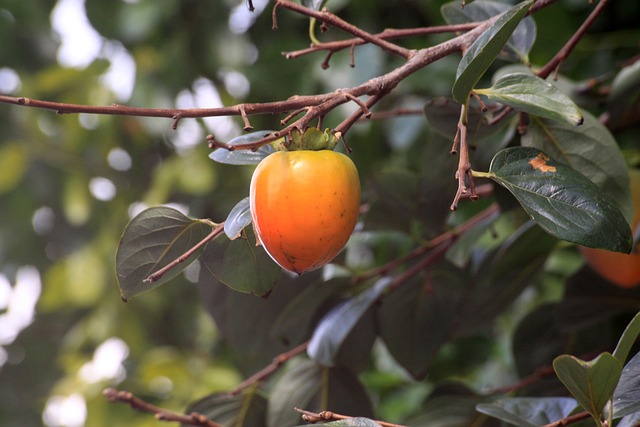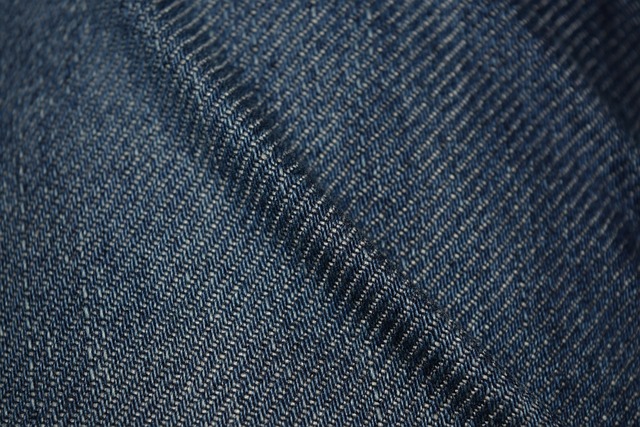This text provides a comprehensive guide to understanding and addressing wrinkles, with a focus on wrinkle reduction strategies. It highlights key factors contributing to skin aging, such as sun exposure, pollution, and lifestyle choices, emphasizing the degradation of collagen and elastin fibers, dead skin cell buildup, and decreased sebum production. The article explores various effective solutions, including topical creams and serums (retinol, peptides, vitamin C), antioxidants, laser treatments, fillers, and toxins. It also emphasizes the importance of lifestyle changes like diet, exercise, hydration, and natural remedies, along with advancements in skincare technologies and gene therapy as future prospects for wrinkle reduction.
Uncover the secrets to achieving a youthful complexion with our comprehensive guide on age-defying skin treatments. From understanding the science behind wrinkle formation to exploring cutting-edge technologies, this article delves into effective strategies for wrinkle reduction. Discover topicals, antioxidants, laser therapies, fillers, lifestyle adjustments, hydration hacks, natural remedies, and advanced techniques that can transform your skin. Say goodbye to fine lines and embrace a radiant, rejuvenated you with these powerful solutions.
Understanding Wrinkle Formation: A Comprehensive Overview

Understanding how wrinkles form is a crucial step in embracing effective wrinkle reduction strategies. Wrinkles are essentially the result of aging skin, caused by a combination of environmental factors and intrinsic changes within our bodies. Over time, collagen and elastin fibers, which provide structure and elasticity to the skin, degrade and break down. This degradation is influenced by factors like sun exposure, pollution, smoking, and lifestyle choices, leading to reduced skin firmness and the formation of lines and creases.
The skin’s natural renewal process also slows down with age, resulting in a buildup of dead skin cells that can clog pores and create an uneven texture. Additionally, as we age, our skin produces less sebum, making it drier and more susceptible to damage. These factors collectively contribute to the visible signs of aging, particularly wrinkles. Knowing this scientific background is essential for choosing the right skincare treatments aimed at wrinkle reduction.
Topical Creams and Serums for Effective Wrinkle Reduction

In the quest for youthful skin, topical creams and serums have emerged as powerful allies in the battle against wrinkles. These formulations are designed to penetrate deeper into the skin, providing targeted treatments for specific concerns like fine lines and age spots. Key active ingredients such as retinol, peptides, and vitamin C are known for their ability to stimulate collagen production, enhance skin elasticity, and even out skin tone, resulting in a more smoothed and radiant complexion.
When it comes to effective wrinkle reduction, consistency is key. Regular application of these creams and serums can significantly improve the appearance of existing lines and prevent new ones from forming. Moreover, many modern products incorporate advanced delivery systems, like liposomes or nano-emulsions, to ensure better absorption and enhanced efficacy, making them a valuable addition to any anti-aging skincare routine.
The Power of Antioxidants in Fighting Age-Related Skin Changes

Antioxidants play a pivotal role in combating age-related skin changes, specifically when it comes to wrinkle reduction. These powerful compounds help protect the skin from environmental stressors and free radical damage, which are major contributors to premature aging. Free radicals are unstable molecules that can disrupt cell function and structure, leading to wrinkles, fine lines, and loss of elasticity.
By neutralizing these harmful molecules, antioxidants help slow down the visible signs of aging. Common antioxidant ingredients in skincare products include vitamins C and E, resveratrol, green tea extract, and coenzyme Q10. These substances not only minimize existing wrinkles but also strengthen the skin’s natural defense mechanisms, promoting a smoother, more youthful complexion.
Laser Treatments: Plowing Through the Layers for Younger-Looking Skin

Laser treatments have emerged as a powerful tool in the quest for younger-looking skin, offering effective solutions for wrinkle reduction. These advanced procedures work by targeting specific layers of the skin, plowing through the surface to stimulate collagen production and boost skin elasticity. By using concentrated beams of light, lasers can break up damaged tissue and encourage the body’s natural healing processes, resulting in a smoother, more youthful complexion.
There are various types of laser treatments designed for different skin concerns, from fine lines and wrinkles to age spots and uneven skin tone. For instance, fractional lasers create tiny holes in the skin, prompting the body to produce new collagen to fill these spaces, effectively minimizing the appearance of wrinkles. Each treatment is tailored to individual needs, ensuring optimal results while minimising potential side effects.
In-Depth Analysis: Fillers vs. Toxins for Wrinkle Minimization

When it comes to age-defying skin treatments, understanding the nuances between fillers and toxins for wrinkle minimization is crucial. Both options offer significant advancements in cosmetic medicine, each with its unique benefits and considerations. Fillers, such as hyaluronic acid or collagen injections, provide immediate results by plumping the skin and filling in fine lines and wrinkles. They are generally considered safe, non-invasive procedures with minimal downtime, making them a popular choice for those seeking quick and effective wrinkle reduction.
On the other hand, toxins like botulinum toxin (Botox) work by relaxing specific muscles responsible for causing dynamic wrinkles. This results in a smoother complexion and delayed signs of aging. While Botox is most commonly associated with facial treatments, it offers a precise and targeted approach to wrinkle minimization. However, its effects are temporary, typically lasting 3-6 months, requiring regular maintenance for sustained results in wrinkle reduction.
Lifestyle Adjustments for a Radiance Boost: Diet and Exercise

Maintaining youthful skin isn’t just about external treatments; lifestyle adjustments play a significant role in achieving and preserving a radiant complexion. One of the most effective ways to boost your skin’s radiance is through a balanced diet and regular exercise. A diet rich in antioxidants, vitamins, and minerals can help protect the skin from damage caused by free radicals, which contribute to wrinkle formation. Foods like berries, leafy greens, and nuts are known for their anti-inflammatory properties and ability to enhance collagen production, thereby reducing the appearance of fine lines and wrinkles.
Regular physical activity is another crucial component. Exercise increases blood circulation, which delivers essential nutrients to the skin, promoting cell turnover and giving it a healthier glow. Additionally, working out helps reduce stress levels, and lower stress is associated with improved skin conditions. So, incorporating diet and exercise into your daily routine can be a powerful tool in your age-defying arsenal, contributing to a more vibrant and youthful complexion.
The Role of Hydration in Maintaining a Youthful Complexion

Staying hydrated is one of the simplest yet most effective ways to maintain a youthful complexion. The skin, like any other part of our bodies, needs water to stay healthy and vibrant. Adequate hydration helps in maintaining the skin’s elasticity, which is key in preventing wrinkles and fine lines. When the skin is well-hydrated, it appears plump and supple, giving a much-sought-after ‘dewy’ look that can rival any high-end skincare product.
In addition to enhancing skin texture, proper hydration plays a significant role in wrinkle reduction. As we age, our skin’s natural moisture barrier can weaken, leading to dryness and premature aging. By consistently moisturizing from the inside out, using products with hyaluronic acid or glycerin, you can help restore and maintain that vital moisture balance. This simple step can significantly slow down the appearance of wrinkles and keep your skin looking its best.
Exploring Natural Remedies: Herbs and Oils with Anti-Aging Properties

In the quest for youthful skin, many are turning to nature’s bounty—herbs and oils known for their potent anti-aging properties. These natural remedies offer a gentle yet effective approach to wrinkle reduction, providing a sustainable alternative to chemical-laden products. Herbs like green tea, rich in antioxidants, have been long celebrated for its ability to soothe and protect the skin from environmental stressors. The compound epigallocatechin gallate (EGCG) found in green tea is a powerful ally in combating signs of aging.
Essential oils, too, play a significant role in skincare routines tailored for age-defying benefits. Oil of rosemary, for instance, stimulates hair and skin follicles, encouraging cell regeneration and improving circulation to give the complexion a radiant glow. Lavender oil, with its calming properties, also aids in healing damaged skin and reducing the appearance of fine lines and wrinkles. Incorporating these natural ingredients into your skincare regimen can offer significant improvements in texture, tone, and overall skin health, contributing to a more youthful and vibrant look.
Advanced Technologies: Future of Age-Defying Skin Care

The future of age-defying skin care is bright, thanks to advanced technologies that are pushing the boundaries of beauty and skincare science. Innovations such as fractional laser therapy offer precise targeting of specific skin concerns like wrinkles, fine lines, and age spots with minimal downtime. This state-of-the-art approach facilitates controlled damage to stimulate collagen production, resulting in smoother, younger-looking skin.
Additionally, emerging trends like gene therapy hold immense potential for personalized wrinkle reduction. By altering specific genes linked to aging, this technology promises to slow down the natural process of skin degradation. As research progresses, we can expect even more groundbreaking solutions that leverage artificial intelligence and advanced biomaterials to deliver highly effective, safe, and tailored age-defying treatments in the years to come.
